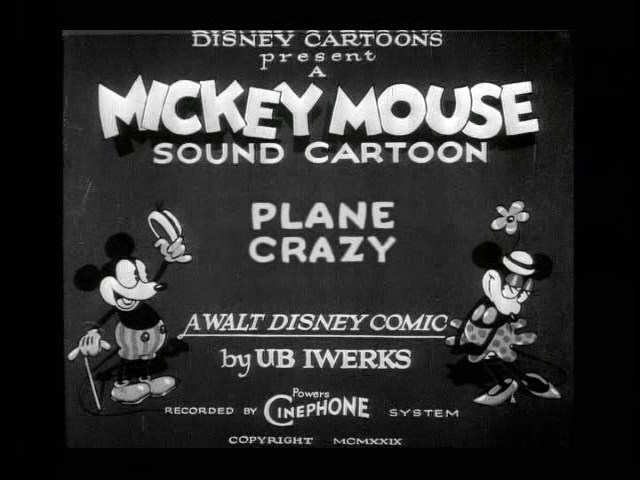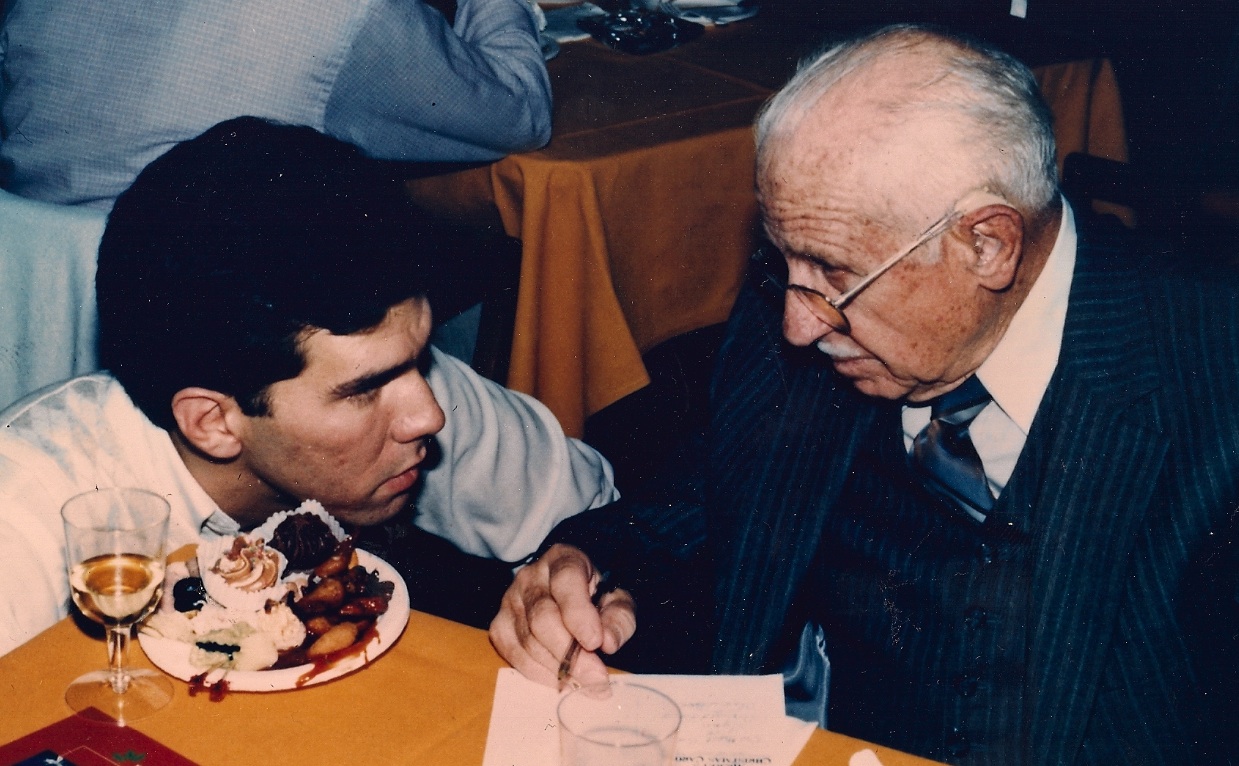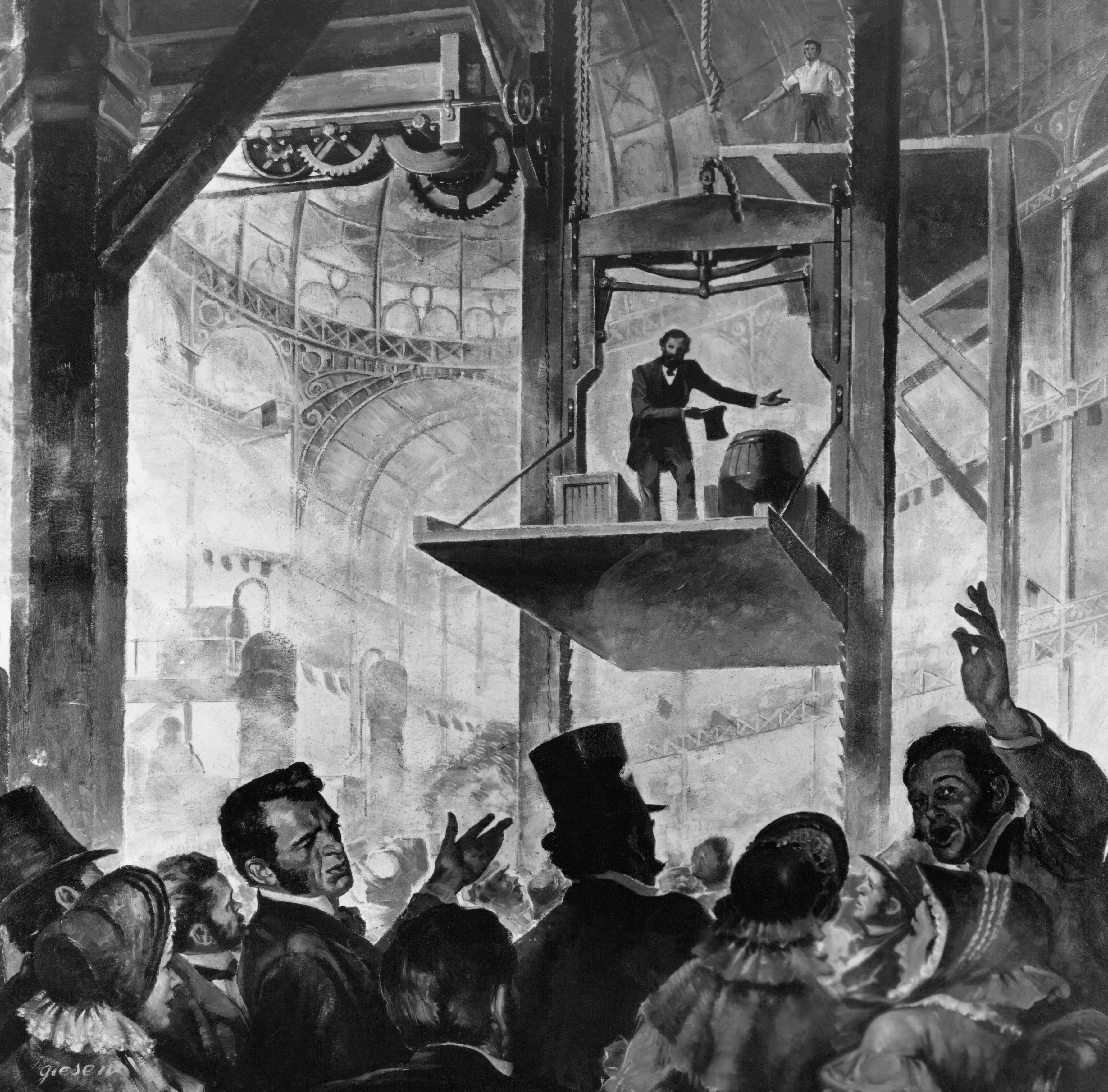|
Symphony Hour
''Symphony Hour'' is a 1942 American animated short film produced by Walt Disney Productions and released by RKO Radio Pictures. The cartoon depicts Mickey Mouse conducting a symphony orchestra sponsored by Pete. The film was directed by Riley Thomson and features music adapted from the " Light Cavalry Overture" by Franz von Suppé. The voice cast includes Walt Disney as Mickey, Billy Bletcher as Pete (as Sylvester Macaroni), and John McLeish as a radio announcer. It was the 117th short in the ''Mickey Mouse'' film series to be released, and the second for that year. The film marked the last theatrical appearance of Horace Horsecollar, Clarabelle Cow, and Clara Cluck for over 40 years, finally reappearing in '' Mickey's Christmas Carol'' (1983). ''Symphony Hour'' is also the last time that Mickey appeared with either Donald Duck or Goofy in a theatrical film for the same length of time. ''Symphony Hour'' bears similarities with the 1935 film '' The Band Concert''. Leonard M ... [...More Info...] [...Related Items...] OR: [Wikipedia] [Google] [Baidu] |
Riley Thomson
Riley A. Thomson Jr. (October 5, 1912 – January 26, 1960) was an American animator and comics artist who spent most of his career working with Walt Disney films and characters. He directed six Disney short films including '' The Nifty Nineties'' and ''Symphony Hour''. Career Thomson began his career in 1930 at the ill-fated studio of Romer Grey. In 1935, he joined Leon Schlesinger Productions (Warner Bros.) as an animator. While there he worked on ''Merrie Melodies'' cartoons and focused on the character Porky Pig. The following year Thomson went to work at Walt Disney Productions. He was first an animator and worked on ''Mickey Mouse'', ''Silly Symphonies'', and ''Donald Duck'' short films. He also worked on the feature-length film ''Snow White and the Seven Dwarfs'' (1937) and "''The Sorcerer's Apprentice''" segment of '' Fantasia'' (1940). After working on ''Fantasia'' Thomson moved to the story department where he became a writer and director. He directed the short films ' ... [...More Info...] [...Related Items...] OR: [Wikipedia] [Google] [Baidu] |
Mickey Mouse (film Series)
''Mickey Mouse'' (originally known as ''Mickey Mouse Sound Cartoons'') is a series of American animated comedy short films produced by Walt Disney Productions. The series started in 1928 with ''Steamboat Willie'' and ended with 2013’s '' Get a Horse!'' being the last in the series to date, otherwise taking a hiatus from 1953 to 1983. The series is notable for its innovation with sound synchronization and character animation, and also introduced well-known characters such as Mickey Mouse, Minnie Mouse, Donald Duck, Daisy Duck, Pluto and Goofy. The name "Mickey Mouse" was first used in the films' title sequences to refer specifically to the character, but was used from 1935 to 1953 to refer to the series itself, as in "Walt Disney presents a Mickey Mouse". In this sense "a Mickey Mouse" was a shortened form of "a Mickey Mouse sound cartoon" which was used in the earliest films. Films from 1929 to 1935 which were re-released during this time also used this naming convention, ... [...More Info...] [...Related Items...] OR: [Wikipedia] [Google] [Baidu] |
Donald Duck
Donald Fauntleroy Duck is a cartoon character created by the Walt Disney Company. Donald is an Anthropomorphism, anthropomorphic white duck with a yellow-orange bill, legs, and feet. He typically wears a sailor suit, sailor shirt and cap with a bow tie. Donald is known for his Donald Duck talk, semi-intelligible speech and his mischievous, temperamental, and pompous personality. Along with his friend Mickey Mouse, Donald was included in ''TV Guide''s list of the 50 greatest cartoon characters of all time in 2002, and has earned a star on the Hollywood Walk of Fame. He has appeared in more films than any other Disney character. Donald Duck appeared in comedic roles in animated cartoons. Donald's first appearance was in ''The Wise Little Hen'' (1934), but it was his second appearance in ''Orphan's Benefit'' that same year that introduced him as a temperamental comic Foil (narrative), foil to Mickey Mouse. Throughout the next two decades, Donald appeared in over 150 theatrical fil ... [...More Info...] [...Related Items...] OR: [Wikipedia] [Google] [Baidu] |
Elevator
An elevator (American English) or lift (Commonwealth English) is a machine that vertically transports people or freight between levels. They are typically powered by electric motors that drive traction cables and counterweight systems such as a hoist, although some pump hydraulic fluid to raise a cylindrical piston like a jack. Elevators are used in agriculture and manufacturing to lift materials. There are various types, like chain and bucket elevators, grain augers, and hay elevators. Modern buildings often have elevators to ensure accessibility, especially where ramps aren't feasible. High-speed elevators are common in skyscrapers. Some elevators can even move horizontally. History Pre-industrial era The earliest known reference to an elevator is in the works of the Roman architect Vitruvius, who reported that Archimedes ( – ) built his first elevator probably in 236 BC. Sources from later periods mention elevators as cabs on a hemp rope, powered by people o ... [...More Info...] [...Related Items...] OR: [Wikipedia] [Google] [Baidu] |
Goofy
Goofy is a cartoon character created by the Walt Disney Company. He is a tall, Anthropomorphism, anthropomorphic dog who typically wears a turtle neck and vest, with pants, shoes, white gloves, and a tall hat originally designed as a rumpled fedora. Goofy is a close friend of Mickey Mouse and Donald Duck, and is Max Goof's father. He is normally characterized as hopelessly Accident-proneness, clumsy and Stupidity, dim-witted, yet this interpretation is not always definitive; occasionally, Goofy is shown as intuitive and clever, albeit in his own unique, Eccentricity (behavior), eccentric way. Goofy debuted in animated cartoons, starting in 1932 with ''Mickey's Revue'' as Dippy Dawg, who is older than Goofy would come to be. Later the same year, he was re-imagined as a younger character, now called Goofy, in the short ''The Whoopee Party''. During the 1930s, he was used extensively as part of a comedy trio with Mickey and Donald. Starting in 1939, Goofy was given his own Goofy (f ... [...More Info...] [...Related Items...] OR: [Wikipedia] [Google] [Baidu] |
Radio Orchestra
A radio orchestra (or broadcast orchestra) is an orchestra employed by a radio network (and sometimes television networks) in order to provide programming as well as sometimes perform incidental or theme music for various shows on the network. In the heyday of radio such orchestras were numerous, performing classical, popular, light music and jazz. However, in recent decades, broadcast orchestras have become increasingly rare. Those that still exist perform mainly classical and contemporary orchestral music, though broadcast light music orchestras, jazz orchestras and big bands are still employed by some radio stations in Europe. Famous broadcast orchestras include the NBC Symphony Orchestra (1937–1954) conducted by Arturo Toscanini, the five orchestras maintained by the British Broadcasting Corporation, particularly the BBC Symphony Orchestra founded in 1930, the MDR Symphony Orchestra founded in 1923, the Bavarian Radio Symphony Orchestra founded in 1949, the Tokyo-based NH ... [...More Info...] [...Related Items...] OR: [Wikipedia] [Google] [Baidu] |
The Mickey Mouse Club
''The Mickey Mouse Club'' is an American variety television show that aired intermittently from 1955 to 1996 and briefly returned to social media in 2017. Created by Walt Disney and produced by Walt Disney Productions, the program was first televised for four seasons, from 1955 to 1959, by ABC. This original run featured a regular, but ever-changing cast of mostly teen performers. ABC broadcast reruns weekday afternoons during the 1958–1959 season, airing right after ''American Bandstand''. The show was revived three times after its initial 1955–1959 run on ABC, first from 1977 to 1979 for first-run syndication as ''The New Mickey Mouse Club'', then from 1989 to 1996 as ''The All-New Mickey Mouse Club'' (also known to fans as ''MMC'' from 1993 to 1996) airing on The Disney Channel, and again from 2017 to 2018 with the moniker ''Club Mickey Mouse'' airing on internet social media. The character of Mickey Mouse appeared in every show, not only in vintage cartoons originally ... [...More Info...] [...Related Items...] OR: [Wikipedia] [Google] [Baidu] |
Wave Three
In physics, mathematics, engineering, and related fields, a wave is a propagating dynamic disturbance (change from equilibrium) of one or more quantities. '' Periodic waves'' oscillate repeatedly about an equilibrium (resting) value at some frequency. When the entire waveform moves in one direction, it is said to be a travelling wave; by contrast, a pair of superimposed periodic waves traveling in opposite directions makes a ''standing wave''. In a standing wave, the amplitude of vibration has nulls at some positions where the wave amplitude appears smaller or even zero. There are two types of waves that are most commonly studied in classical physics: mechanical waves and electromagnetic waves. In a mechanical wave, stress and strain fields oscillate about a mechanical equilibrium. A mechanical wave is a local deformation (strain) in some physical medium that propagates from particle to particle by creating local stresses that cause strain in neighboring particles too. For ex ... [...More Info...] [...Related Items...] OR: [Wikipedia] [Google] [Baidu] |
Spike Jones
Lindley Armstrong "Spike" Jones (December 14, 1911 – May 1, 1965) was an American musician, bandleader and conductor specializing in spoof arrangements and satire of popular songs and classical music. Ballads receiving the Jones treatment were punctuated with various sound effects, including gunshots, whistles, cowbells, hiccups, burps, sneezes, animal sounds and outlandish and comedic vocals. Jones and his band recorded for RCA Victor under the title Spike Jones and His City Slickers from the early 1940s to the mid-1950s, and they toured the United States and Canada as "The Musical Depreciation Revue". Early years Lindley Armstrong Jones was born in Long Beach, California, the son of Ada (Armstrong) and Lindley Murray Jones, a Southern Pacific railroad agent. Young Lindley Jones was given the nickname 'Spike' for being so thin that he was compared to a railroad spike. At the age of 11 he got his first set of drums. As a teenager he played in bands that he formed himse ... [...More Info...] [...Related Items...] OR: [Wikipedia] [Google] [Baidu] |
The Band Concert
''The Band Concert'' is a 1935 American animated short film produced in 3-strip Technicolor by Walt Disney Productions and released by United Artists. The 73rd short film in the Mickey Mouse series, it was the second release of the year, and notable as the first in the series to be produced in color. Directed by Wilfred Jackson, with music adapted by Leigh Harline, the action follows a small music band, conducted by Mickey Mouse, which struggles through a distraction-filled public performance. Clarence Nash provides the voice of Donald Duck, the only speaking character. The film remains among the most highly acclaimed of the Disney shorts. Plot Mickey Mouse's concert band is performing a concert in a park. As the film opens, they are being applauded for having just played music from Louis Joseph Ferdinand Hérold's ''Zampa''. They next begin Gioacchino Rossini's ''William Tell'' overture. Mickey's performance is first disrupted by Peter Pig's vibrato trumpet and Paddy Pig's ... [...More Info...] [...Related Items...] OR: [Wikipedia] [Google] [Baidu] |
Big Cartoon DataBase
The Big Cartoon DataBase (or BCDB for short) was an online database of information about animated cartoons, animated feature films, animated television shows, and cartoon shorts. The BCDB project began in 1997 as a list of Disney animated features on creator Dave Koch's local computer. In response to increasing interest in the material, the database went online in 1998 as a searchable resource dedicated to compiling information about cartoons, including production details such as voice actors, producers, and directors, as well as plot summaries and user reviews of cartoons. In 2003, BCDB became a 501(c) non-profit corporation. On June 24, 2009, it was announced by creator Dave Koch on his BCDB forums that the site had 100,000 titles. Due to system issues that have been unable to be resolved, all cartoon information on the site is non-existent after 2019. Users have ceased to contribute to the site due to the issue. Since the creator is no longer active and the moderators ar ... [...More Info...] [...Related Items...] OR: [Wikipedia] [Google] [Baidu] |
Mickey's Christmas Carol
''Mickey's Christmas Carol'' is a 1983 American animated Christmas fantasy featurette, directed and produced by Burny Mattinson. The cartoon is an adaptation of Charles Dickens's 1843 novella ''A Christmas Carol'', and stars Scrooge McDuck as Ebenezer Scrooge. The rest of the cast was filled mostly using characters from pre-existing Disney animated properties; notably from the Mickey Mouse universe, Jiminy Cricket from ''Pinocchio'' (1940), ''The Adventures of Ichabod and Mr. Toad'' (1949), and ''Robin Hood'' (1973). The featurette was produced by Walt Disney Productions and released by Buena Vista Distribution on December 16, 1983, with the re-issue of ''The Rescuers'' (1977). In the United States, it was first aired on television on NBC, on December 10, 1984. ''Mickey's Christmas Carol'' was largely adapted from the 1974 Disneyland Records audio musical ''An Adaptation of Dickens' Christmas Carol''. The musical featured similar dialogue and a similar cast of characters. ... [...More Info...] [...Related Items...] OR: [Wikipedia] [Google] [Baidu] |






